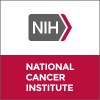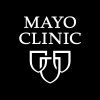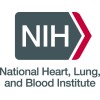
Interleukin-12 in Treating Patients With Previously Treated Non-Hodgkin's Lymphoma or Hodgkin's...
Extranodal Marginal Zone B-cell Lymphoma of Mucosa-associated Lymphoid TissueNodal Marginal Zone B-cell Lymphoma15 morePhase II trial to study the effectiveness of interleukin-12 in treating patients with previously treated non-Hodgkin's lymphoma or Hodgkin's disease. Interleukin-12 may kill tumor cells by stopping blood flow to the tumor and by stimulating a person's white blood cells to kill lymphoma cells.

Dose Monitoring of Busulfan and Combination Chemotherapy in Hodgkin or Non-Hodgkin Lymphoma Undergoing...
Adult Grade III Lymphomatoid GranulomatosisAdult Nasal Type Extranodal NK/T-cell Lymphoma143 moreThis clinical trial studies personalized dose monitoring of busulfan and combination chemotherapy in treating patients with Hodgkin or non-Hodgkin lymphoma undergoing stem cell transplant. Giving chemotherapy before a stem cell transplant stops the growth of cancer cells by stopping them from dividing or killing them. After treatment, stem cells are collected from the patient's peripheral blood or bone marrow and stored. The stem cells are then returned to the patient to replace the blood-forming cells that were destroyed by the chemotherapy. Monitoring the dose of busulfan may help doctors deliver the most accurate dose and reduce toxicity in patients undergoing stem cell transplant.

Fludarabine Phosphate, Melphalan, and Low-Dose Total-Body Irradiation Followed by Donor Peripheral...
Accelerated Phase Chronic Myelogenous LeukemiaAdult Acute Lymphoblastic Leukemia in Remission77 moreThis phase II trial studies how well giving fludarabine phosphate, melphalan, and low-dose total-body irradiation (TBI) followed by donor peripheral blood stem cell transplant (PBSCT) works in treating patients with hematologic malignancies. Giving chemotherapy drugs such as fludarabine phosphate and melphalan, and low-dose TBI before a donor PBSCT helps stop the growth of cancer and abnormal cells and helps stop the patient's immune system from rejecting the donor's stem cells. When the healthy stem cells from the donor are infused into the patient they may help the patient's bone marrow make stem cells, red blood cells, white blood cells, and platelets. Sometimes the transplanted cell from a donor can make an immune response against the body's normal cells. Giving tacrolimus, mycophenolate mofetil (MMF), and methotrexate after transplant may stop this from happening

Vaccine Therapy With or Without Cryosurgery in Treating Patients With Residual, Relapsed, or Refractory...
Cutaneous B-cell Non-Hodgkin LymphomaExtranodal Marginal Zone B-cell Lymphoma of Mucosa-associated Lymphoid Tissue14 moreRATIONALE: Vaccines, such as dendritic cell therapy (DC) made from a person's tumor cells and white blood cells may help the body build an effective immune response to kill tumor cells. Cryosurgery kills cancer cells by freezing them. Giving vaccine therapy together with cryosurgery may kill more tumor cells. PURPOSE: This clinical trial studies giving vaccine therapy together with or without cryosurgery in treating patients with B-cell Non-Hodgkin's lymphoma.

AR-42 in Treating Patients With Advanced or Relapsed Multiple Myeloma, Chronic Lymphocytic Leukemia,...
Adult Nasal Type Extranodal NK/T-cell LymphomaAnaplastic Large Cell Lymphoma65 moreRATIONALE: AR-42 may stop the growth of cancer cells by blocking some of the enzymes needed for cell growth. PURPOSE: This phase I trial is studying the side effects and best dose of AR-42 in treating patients with advanced or relapsed multiple myeloma, chronic lymphocytic leukemia, or lymphoma.

Fludarabine Phosphate, Melphalan, Total-Body Irradiation, Donor Stem Cell Transplant in Treating...
Accelerated Phase Chronic Myelogenous LeukemiaAcute Myeloid Leukemia With Multilineage Dysplasia Following Myelodysplastic Syndrome100 moreThis clinical trial is studying how well giving fludarabine phosphate and melphalan together with total-body irradiation followed by donor stem cell transplant works in treating patients with hematologic cancer or bone marrow failure disorders. Giving low doses of chemotherapy and total-body irradiation before a donor peripheral blood stem cell transplant helps stop the growth of cancer cells or abnormal cells. It may also stop the patient's immune system from rejecting the donor's stem cells. The donated stem cells may replace the patient's immune cells and help destroy any remaining cancer or abnormal cells (graft-versus-tumor effect)

Rituximab in Treating Patients Undergoing Donor Peripheral Blood Stem Cell Transplant for Relapsed...
B-cell Adult Acute Lymphoblastic LeukemiaB-cell Childhood Acute Lymphoblastic Leukemia36 moreThis phase II trial studies giving rituximab before and after a donor peripheral blood stem cell transplant in patients with B-cell lymphoma that does not respond to treatment (refractory) or has come back after a period of improvement (relapsed). Monoclonal antibodies, such as rituximab, can interfere with the ability of cancer cells to grow and spread. Giving rituximab before and after a donor peripheral blood stem cell transplant may help stop cancer from coming back and may help keep the patient's immune system from rejecting the donor's stem cells.

Rituxan/BEAM vs Bexxar/BEAM in Autologous Hematopoietic Stem Cell Transplant for Non-Hodgkin's Lymphoma...
LymphomaB-Cell5 moreThis study is designed as a Phase III, multicenter trial, comparing progression-free survival (PFS) after autologous hematopoietic stem cell transplantation using a standard Rituxan plus BEAM transplant regimen versus a regimen adding Bexxar to BEAM.

Haploidentical Donor Bone Marrow Transplant in Treating Patients With High-Risk Hematologic Cancer...
Accelerated Phase Chronic Myelogenous LeukemiaAdult Acute Lymphoblastic Leukemia in Remission95 moreThis phase II trial studies how well giving fludarabine phosphate, cyclophosphamide, tacrolimus, mycophenolate mofetil and total-body irradiation together with a donor bone marrow transplant works in treating patients with high-risk hematologic cancer. Giving low doses of chemotherapy, such as fludarabine phosphate and cyclophosphamide, and total-body irradiation before a donor bone marrow transplant helps stop the growth of cancer cells by stopping them from dividing or killing them. Giving cyclophosphamide after transplant may also stop the patient's immune system from rejecting the donor's bone marrow stem cells. The donated stem cells may replace the patient's immune system cells and help destroy any remaining cancer cells (graft-versus-tumor effect). Sometimes the transplanted cells from a donor can also make an immune response against the body's normal cells. Giving tacrolimus and mycophenolate mofetil after the transplant may stop this from happening

Iodine I 131 Tositumomab and Fludarabine Phosphate in Treating Older Patients Who Are Undergoing...
Extranodal Marginal Zone B-cell Lymphoma of Mucosa-associated Lymphoid TissueNodal Marginal Zone B-cell Lymphoma13 moreThis phase I trial studies the side effects and best dose of fludarabine (fludarabine phosphate) when given together with iodine I 131 tositumomab in treating older patients who are undergoing an autologous or syngeneic stem cell transplant for relapsed or refractory B-cell non-Hodgkin's lymphoma (NHL). Radiolabeled monoclonal antibodies, such as iodine I 131 tositumomab, can find cancer cells and carry cancer-killing substances to them without harming normal cells. Drugs used in chemotherapy, such as fludarabine, work in different ways to stop the growth of cancer cells, either by killing the cells or by stopping them from dividing. A peripheral stem cell transplant may be able to replace blood-forming cells that were destroyed by chemotherapy and radiation therapy. Giving iodine I 131 tositumomab together with fludarabine followed by autologous stem cell transplant may be an effective treatment for NHL
